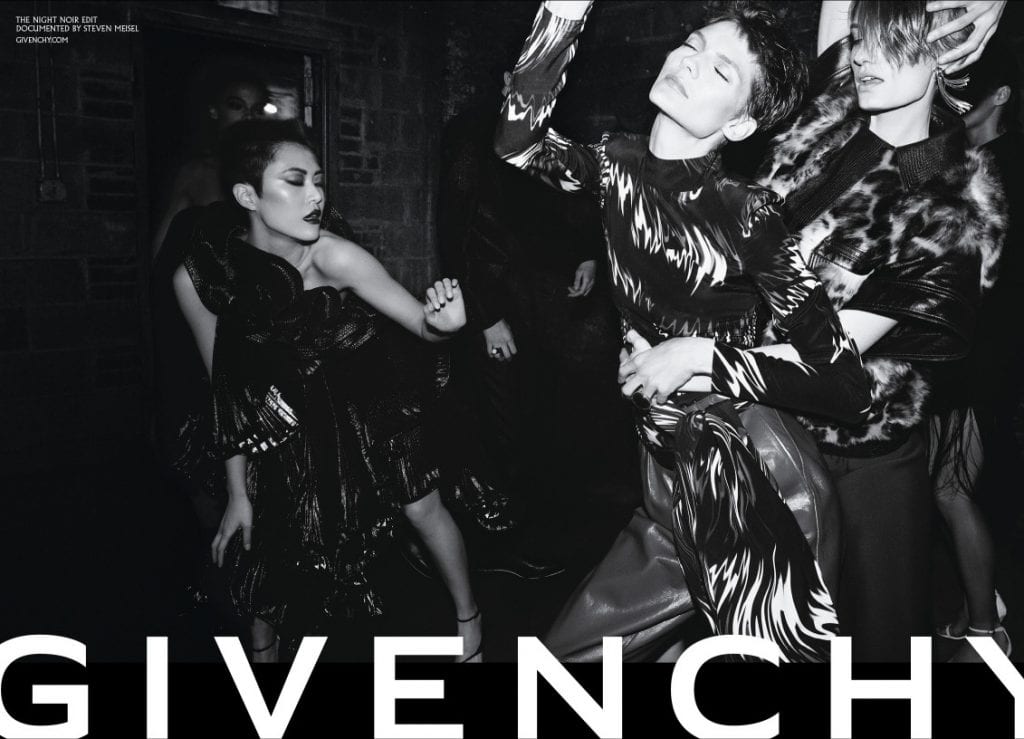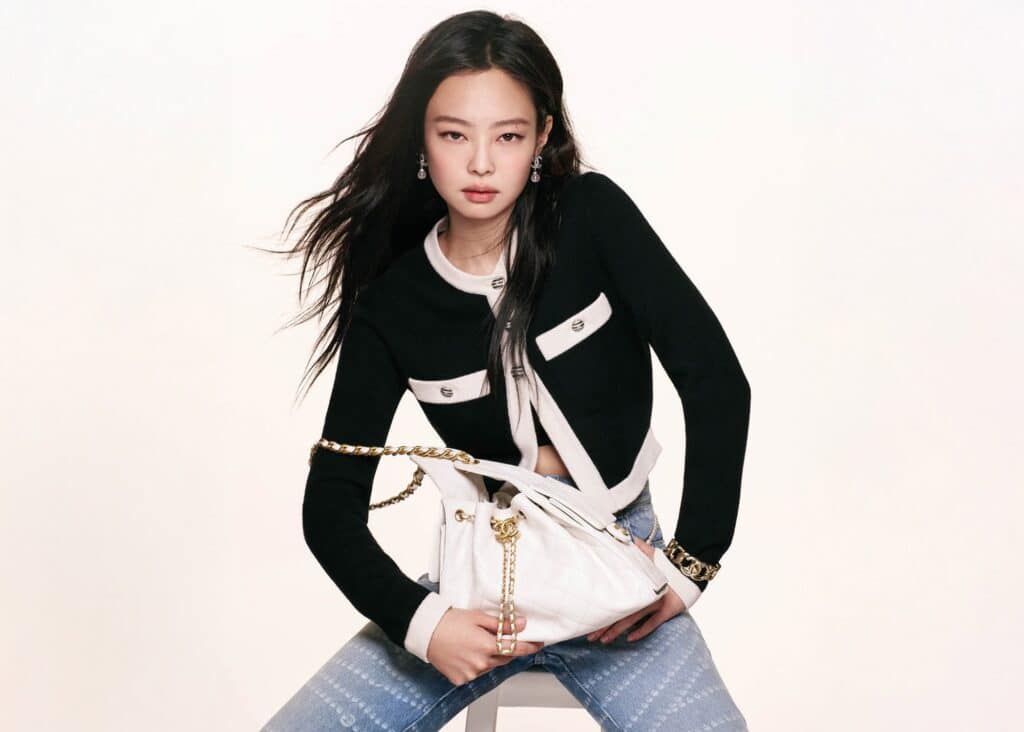Atop the Givenchy creative totem pole is a new name. In the place of Clare Waight Keller – the creative director who won industry praise for her thoroughly well-designed garments and who famously dressed Meghan Markle for her wedding day – comes a new designer: Matthew Williams. Unlike some of the chief creatives that have come before him, Williams does “not come from the school of couture,” as the New York Times’ Vanessa Friedman put it on Monday. Instead, the 34-year old founder of upscale streetwear brand 1017 Alyx 9SM “comes from the school of Kanye,” having been one of the rapper’s former creative collaborators.
It says a lot that a 68-year old couture house ousted its former designer, a celebrated creative who reintroduced the house’s handmade offerings (but failed to gain mass traction), for a budding young talent, who is perhaps best known for popularizing a chest rig (aka – a streamlined-and-styled take on a traditional military bag that straps to your chest) that was popularized by Mr. West, himself, as well as rapper A$AP Rocky, basketball mega-star Russell Westbrook, and since-accused serial rapist Ian Connor. (As ACRONYM co-founder Errolson Hugh has since pointed out, the rig, itself, is a dead-ringer for “an original design by Evan Hill of backcountry outfitters Hill People Gear,” making the “it” bag “the result of a practice based in testing, experience, and solid functional principles, not fashion.”)
Williams’ impending tenure – which starts this month and which the California-born creative says will be part of “a new era based on modernity and inclusivity” for Givenchy – is, in fact, noteworthy. But the most interesting element at play here is not really Williams, his plans for the brand or his long list of collaborations and famous friends. It is what his appointment says about Givenchy’s parent company, LVMH Moët Hennessy Louis Vuitton.
Friedman aptly notes that Williams’ appointment suggests that LVMH is “doubling down on the idea that the future of luxury will have less to do with a designer’s ability to cut a pattern than their ability to amalgamate the broader cultural moment,” and that is true. To a large extent, Givenchy’s new hire is a crystal-clear and very tangible demonstration of the model that is LVMH; it is seemingly the latest signifier that LVMH is no longer – and has not been for quite some time – really dealing in any traditional understanding of luxury, one that shuns mass production, refuses to pander to consumers’ whims, and maintains a steadfast dedication to quality.
More realistically, LVMH is a corporate behemoth with a very-robust bottom line that is the best in the world not at creating luxury goods but at building out (i.e., creating increased tangible and intangible value in) globally-famous brands. In terms of the offerings of many of its brands, this means giving masses of consumers exactly what they want – whether that be coated canvas handbags covered in well-known logos or expensive but not-bank-breaking t-shirts masquerading as high fashion … or particularly as of late, any array of streetwear-centric goods meant to whet the insatiable appetites of millennial spenders.
While at least some have proposed that Williams might struggle to find fans among the house’s couture devotees, the buzzy young creative will likely fit neatly – at least for the increasingly short 2-3 year time period that is the modern-day creative director tenure – within this ecosystem that thrives on marketing and high-margin (and thus, high profit) “it” goods. Under his watch, LVMH will seek to continue to transform Givenchy into a billion dollar brand ideally with hordes of fans willing to shell out for pricey accessories and t-shirts, harkening back to when Waight Keller’s predecessor Riccardo Tisci was at the helm.
In other words, LVMH will continue to mold Givenchy not into a luxury brand in the traditional sense (i.e., one that observes ideals, such as scarcity, the highest quality materials and construction, and a position that eschews fleeting fashion trends), but a blockbuster from a revenue standpoint because that is is LVMH’s model and precisely how it has garnered itself a market capitalization of nearly $200 billion, annual sales of just under $60 billion (the vast majority of which comes from handbags and small leather goods), and the title of the largest luxury goods group in the world.
This is not news, though. The French conglomerate, led by shrewd businessman and billionaire Bernard Arnault, is widely as a luxury goods purveyor. However, while Arnault has built a bona fide empire, with upwards of 70 brands, from Louis Vuitton, Dior, Fendi, Givenchy, and Celine, to wine and spirits companies and retailers like Sephora, under its umbrella, the group has not necessarily rise to the top by manufacturing and selling luxury goods in the traditional sense. That may have been the case when LVMH first acquired brands like Louis Vuitton, Christian Dior, Givenchy, and co. many decades ago, but in the time since then and in furtherance of its efforts to expand these formerly privately held houses, the offerings and the larger mission has evolved.
Now, more realistically, LVMH and its companies operate far more as mass entities (particularly when compared to the likes of Brunello Cuccinelli, Hermes, and co.) that are in the business of helping millions of consumers to conspicuously display their own personal brands – whether that be on Instagram or IRL. They do this by selling them large volumes of accessories and at least some garments (albeit not runway ones) under the guise of luxury thanks to the houses’ origins and decades of marketing efforts that focus, at least in part, on quality, craftsmanship, and the aura of exclusivity.
Look beyond the runways and the stories of fabled ateliers and historic workshops, and in practice, these companies are handbag purveyors with iron-clad arsenals of instantly-recognizable and coveted trademarks (and related goodwill) to trade in. The good news for Givenchy: Chances are, a fancy-buckled chest rig with ties to big-name celebrities just might be the thing that can be neatly packaged and sold to brand-name-happy consumers looking to conspicuously prove their worth and fashionability. And at the end of the day, it just might be the thing to help LVMH give people want they want, and thus, bulk up sales (and profit) at Givenchy … for the time being, at least.
UPDATED (June 16, 2020): This article has been updated to include a comment from Errolson Hugh regarding the potential origins of the Alyx chest rig.













